If your computer is locked, and you are seeing a “WARNING! Your computer has been locked and all your data were encrypted” notification from FBI Cybercrime Division and International Cyber Security Protection Alliance, then your computer is infected with a piece of malware known as Trojan Reveton.
![FBI Cybercrime Division: Computer locked, data encrypted virus [Image: FBI Cybercrime Division: Computer locked, data encrypted virus]](http://malwaretips.com/blogs/wp-content/uploads/2013/05/FBI-Cybercrime-Division-computer-locked-data-encrypted.jpg)
The FBI “Your computer has been locked and all your data were encrypted” virus is distributed through several means. Malicious websites, or legitimate websites that have been compromised, may drop this trojan onto a compromised computer. This drive-by-download often happens surreptitiously. Another method used to propagate this type of malware is spam email containing infected attachments or links to malicious websites. The threat may also be downloaded manually by tricking the user into thinking they are installing a useful piece of software.
The FBI “Your computer has been locked and all your data were encrypted” virus is also prevalent on peer-to-peer file sharing websites and is often packaged with pirated or illegally acquired software.
Once installed on your computer, the “Your computer has been locked and all your data were encrypted” virus will display a bogus notification that pretends to be from FBI Cybercrime Division and ICSPA, and states that your computer has been blocked due to it being involved with the distribution of pornographic material, SPAM and copyrighted content.
The “Your computer has been locked and all your data were encrypted” virus will lock you out of your computer and applications, so whenever you’ll try to log on into your Windows operating system or Safe Mode with Networking, it will display instead a lock screen asking you to pay a non-existing fine of €200 or $200 in the form of a Ukash, MoneyPak or Paysafecard voucher depending on your location.
Furthermore, to make this alert seem more authentic, this virus also has the ability to access your installed webcam, so that the bogus “Your computer has been locked and all your data were encrypted” notification shows what is happening in the room.
The FBI Cybercrime Division “Your computer has been locked and all your data were encrypted” virus locks the computer and depending on the user’s current location, displays a localized webpage that covers the entire desktop of the infected computer and demands payment for the supposed possession of illicit material.
The message displayed by the threat can be localized depending on the user’s location, with text written in the appropriate language.
FBI Cybercrime Division
International Cyber Security Protection Alliance
WARNING! Your computer has been locked and all your data were encrypted
Reason: violation of Law.
Possible violations are described below:
Title 17- COPYRIGHTS
Chapter 10, Subchapter B – COPYING CONTROLS
(a) Prohibition on Importation, Manufacture, and Distribution.— No person shall import, manufacture, or distribute any digital audio recording device or digital audio interface device that does not conform to—
(1) the Serial Copy Management System;
(2) a system that has the same functional characteristics as the Serial Copy Management System and requires that copyright and generation status information be accurately sent, received, and acted upon between devices using the system’s method of serial copying regulation and devices using the Serial Copy Management System; or
(3) any other system certified by the Secretary of Commerce as prohibiting unauthorised serial copying.
Title 18 – CRIMES AND CRIMINAL PROCEDURE Title 18, Part I Chapter 117 § 2427
Inclusion of offences relating to child pornography in definition of sexual activity for which any person can be charged with a criminal offence.
Title 18 Part I Chapter 110, § 2258C Inclusion of offences relating to child pornography in definition of sexual activity for which any person can be charged with a criminal offence.
a) Elements.—
(1) In general— The National Center for Missing and Exploited Children may provide elements relating to any apparent child pornography image of an identified child to an electronic communication service provider or a remote computing service provider for the sole and exclusive purpose of permitting that electronic communication service provider or remote computing service provider to stop the further transmission of images.
(2) Inclusions.— The elements authorised under paragraph (1) may include hash values or other unique identifiers associated with a specific image, Internet location of images, and other technological elements that can be used to identify and stop the transmission of child pornography.
(3) Exclusion— The elements authorised under paragraph (1) may not include the actual images.
(b) Use by Electronic Communication Service Providers and Remote Computing Service Providers.— Any electronic communication service provider or remote computing service provider that receives elements relating to any apparent child pornography image of an identified child from the National Center for Missing and Exploited Children under this section may use such information only for the purposes described in this section, provided that such use shall not relieve that electronic communication service provider or remote computing service provider from its reporting obligations under section 2258A.
(c) Limitations.— Nothing in subsections [1] (a) or (b) requires electronic communication service providers or remote computing service providers receiving elements relating to any apparent child pornography image of an identified child from the National Center for Missing and Exploited Children to use the elements to stop the further transmission of the images.
(d) Provision of Elements to Law Enforcement.— The National Center for Missing and Exploited Children shall make available to Federal. State, and local law enforcement involved in the investigation of child pornography crimes elements, including hash values, relating to any apparent child pornography image of an identified child reported to the National Center for Missing and Exploited Children.
(e) Use by Law Enforcement.— Any Federal, State, or local law enforcement agency that receives elements relating to any apparent child pornography image of an identified child from the National Center for Missing and Exploited Children under section [1] (d) may use such elements only in the performance of the official duties of that agency to investigate child pornography crimes.
Title 18 Part I Chapter 110 § 22524
§ 2252A – Certain activities relating to material constituting or containing child pornography
Title 26 Subtitle F Chapter 78 > Subchapter A § 7612 Special procedures for summonses for computer software
To unlock your computer you must pay a penalty within 24 hours and input voucher axle to a form below. It will take up to 24 hours to check voucher code and decrypt your data.
The “Your computer has been locked and all your data were encrypted” lock screen is a scam, and you should ignore any alerts that this malicious software might generate.
Under no circumstance should you send any Ukash or Paysafecard code to these cyber criminals, and if you have, you can should request a refund, stating that you are the victim of a computer virus and scam.
This Article Contains:
“Your computer has been locked and all your data were encrypted” lock screen – Virus Removal Guide
This page is a comprehensive guide, which will remove the Your computer has been locked and all your data were encrypted infection from your your computer. Please perform all the steps in the correct order. If you have any questions or doubt at any point STOP and ask for our assistance.
The Your computer has been locked and all your data were encrypted will start automatically when you login to your computer and display its screen locker so that you are unable to access your computer, therefore we will need to remove this infection by using one of the below methods:
OPTION 1: Remove Your computer has been locked and all your data were encrypted lock screen virus with System Restore
OPTION 2: Remove Your computer has been locked and all your data were encrypted virus with with HitmanPro Kickstart
OPTION 3: Remove Your computer has been locked and all your data were encrypted virus with Kaspersky Rescue Disk
OPTION 1: Remove Your computer has been locked and all your data were encrypted lock screen virus with System Restore
System Restore helps you restore your computer’s system files to an earlier point in time. It’s a way to undo system changes to your computer without affecting your personal files, such as e‑mail, documents, or photos.
Because the Your computer has been locked and all your data were encrypted virus will not allow you to start the computer in Windows regular mode, we will need to start System Restore from the Safe Mode with Command Prompt mode.
STEP 1: Restore Windows to a previous state using System Restore
- Reboot your computer into Safe Mode with Command Prompt. To do this, turn your computer off and then back on and immediately when you see anything on the screen, start tapping the F8 key on your keyboard.
![Windows F8 key [Image: F8 key]](data:image/gif;base64,R0lGODlhAQABAAAAACH5BAEKAAEALAAAAAABAAEAAAICTAEAOw==)
If you are using Windows 8, the trick is to hold the Shift button and gently tap the F8 key repeatedly, this will sometimes boot you into the new advanced “recovery mode”, where you can choose to see advanced repair options. On the next screen, you will need to click on the Troubleshoot option, then select Advanced Options and select Windows Startup Settings. Click on the Restart button, and you should now be able to see the Advanced Boot Options screen. - Using the arrow keys on your keyboard, select Safe Mode with Command Prompt and press Enter on your keyboard.
![Advanced Boot Options screen [Image: Starting computer in Safe Mode with Command Prompt]](data:image/gif;base64,R0lGODlhAQABAAAAACH5BAEKAAEALAAAAAABAAEAAAICTAEAOw==)
- At the command prompt, type rstrui.exe, and then press ENTER.
![rstrui.exe command in Safe Mode with Command Prompt [Image: Start System Restore to remove lock screen virus]](data:image/gif;base64,R0lGODlhAQABAAAAACH5BAEKAAEALAAAAAABAAEAAAICTAEAOw==)
Alternatively, if you are using Windows Vista, 7 and 8, you can type: C:\windows\system32\rstrui.exe , and press Enter. And if you are a Windows XP user, type C:\windows\system32\restore\rstrui.exe, then press Enter. - System Restore should start, and you will display also a list of restore points. Try using a restore point created just before the date and time the Your computer has been locked and all your data were encrypted lock screen virus has infected your computer.
![Restore your computer's system files to an earlier point in time [Image: Restore settings to remove ransomware]](data:image/gif;base64,R0lGODlhAQABAAAAACH5BAEKAAEALAAAAAABAAEAAAICTAEAOw==)
- When System Restore has completed its task, start your computer in Windows regular mode, and perform a scan with Malwarebytes Anti-Malware and HitmanPro, as seen in the next step.
STEP 2: Remove Your computer has been locked and all your data were encrypted malicious files with Malwarebytes Anti-Malware Free
Even after using System Restore,
- You can download Malwarebytes Anti-Malware Free from the below link, then double-click on the icon named mbam-setup.exe to install this program.
MALWAREBYTES ANTI-MALWARE DOWNLOAD LINK(This link will open a download page in a new window from where you can download Malwarebytes Anti-Malware Free) - When the installation begins, keep following the prompts in order to continue with the setup process, then at the last screen click on the Finish button.
![Malwarebytes Anti-Malware installation screen [Image: Malwarebytes Anti-Malware final installation screen]](data:image/gif;base64,R0lGODlhAQABAAAAACH5BAEKAAEALAAAAAABAAEAAAICTAEAOw==)
- On the Scanner tab, select Perform quick scan, and then click on the Scan button to start searching for the Your computer has been locked and all your data were encrypted malicious files.
![Run a Quick Scan with Malwarebytes Anti-Malware [Image: Malwarebytes Anti-Malware Quick Scan]](data:image/gif;base64,R0lGODlhAQABAAAAACH5BAEKAAEALAAAAAABAAEAAAICTAEAOw==)
- Malwarebytes’ Anti-Malware will now start scanning your computer for Your computer has been locked and all your data were encrypted virus as shown below.

- When the Malwarebytes Anti-Malware scan has finished, click on the Show Results button.
![Malwarebytes when the system scan has completed [Image: Malwarebytes Anti-Malware scan results]](data:image/gif;base64,R0lGODlhAQABAAAAACH5BAEKAAEALAAAAAABAAEAAAICTAEAOw==)
- You will now be presented with a screen showing you the computer infections that Malwarebytes Anti-Malware has detected. Make sure that everything is Checked (ticked), then click on the Remove Selected button.
![Malwarebytes Anti-Malwar removing Your computer has been locked and all your data were encrypted virus [Image: Malwarebytes Anti-Malwar removing Your computer has been locked and all your data were encrypted virus]](data:image/gif;base64,R0lGODlhAQABAAAAACH5BAEKAAEALAAAAAABAAEAAAICTAEAOw==)
STEP 3: Double-check for the Your computer has been locked and all your data were encrypted virus with HitmanPro
- You can download HitmanPro from the below link:
HITMANPRO DOWNLOAD LINK (This link will open a web page from where you can download HitmanPro) - Double-click on the file named HitmanPro.exe (for 32-bit versions of Windows) or HitmanPro_x64.exe (for 64-bit versions of Windows). When the program starts you will be presented with the start screen as shown below.

Click on the Next button, to install HitmanPro on your computer.

- HitmanPro will now begin to scan your computer for Your computer has been locked and all your data were encrypted malicious files.

- When it has finished it will display a list of all the malware that the program found as shown in the image below. Click on the Next button, to remove Your computer has been locked and all your data were encrypted virus.

- Click on the Activate free license button to begin the free 30 days trial, and remove all the malicious files from your computer.
![HitmanPro free 30 days trial [Image: HitmanPro 30 days activation button]](data:image/gif;base64,R0lGODlhAQABAAAAACH5BAEKAAEALAAAAAABAAEAAAICTAEAOw==)
OPTION 2: Remove Your computer has been locked and all your data were encrypted virus with with HitmanPro Kickstart
If you cannot start your computer into Safe Mode with Command Prompt mode, we can use the HitmanPro Kickstart program to bypass Your computer has been locked and all your data were encrypted lock screen.
As the Your computer has been locked and all your data were encrypted ransomware infection locks you out of your computer, you will need to create a bootable USB drive that contains the HitmanPro Kickstart program.
We will then boot your computer using this bootable USB drive and use it to clean the infection so that you are able to access Windows normally again.
You will also need a USB drive, which will have all of its data erased and will then be formatted. Therefore, only use a USB drive that does not contain any important data.
- Using a “clean” (non-infected) computer, please download HitmanPro Kickstart from the below link.
HITMANPRO DOWNLOAD LINK (This link will open a download page in a new web page from where you can download HitmanPro Kickstart) - Once HitmanPro has been downloaded, please insert the USB flash drive that you would like to erase and use for the installation of HitmanPro Kickstart. Then double-click on the file named HitmanPro.exe (for 32-bit versions of Windows) or HitmanPro_x64.exe (for 64-bit versions of Windows).
To create a bootable HitmanPro USB drive, please follow the instructions from this video:
- Now, remove the HitmanPro Kickstart USB drive and insert it into the Your computer has been locked and all your data were encrypted infected computer.
- Once you have inserted the HitmanPro Kickstart USB drive, turn off the infected computer and then turn it on. As soon as you power it on, look for text on the screen that tells you how to access the boot menu.
![Windows Boot Menu screens [Image: Windows Boot Menu screens]](data:image/gif;base64,R0lGODlhAQABAAAAACH5BAEKAAEALAAAAAABAAEAAAICTAEAOw==)
The keys that are commonly associated with enabling the boot menu are F10, F11 or F12. - Once you determine the proper key (usually the F11 key) that you need to press to access the Boot Menu, restart your computer again and start immediately tapping that key. Next, please perform a scan with HitmanPro Kickstart as shown in the video below.
- HitmanPro will now reboot your computer and Windows should start normally. Then please Malwarebytes Anti-Malware and HitmanPro, and scan your computer for any left over infections.
OPTION 3: Remove Your computer has been locked and all your data were encrypted virus with Kaspersky Rescue Disk
If any of the above methods did not clean your infected computer, we can use a Kaspersky Rescue Disk Bootable to clean the Windows registry and to perform a system scan to remove the Your computer has been locked and all your data were encrypted virus.
To create a bootable Kaspersky Rescue Disk, we will need the following items:
- A clean (non-infected) computer with Internet access
- A blank DVD or CD
- A computer with a DVD or CD burner
STEP 1: Download and create a bootable Kaspersky Rescue Disk CD
- You can download Kaspersky Rescue Disk utility from link below:
KASPERSKY RESCUE DISK DOWNLOAD LINK (This link will automatically download Kaspersky Rescue Disk (kav_rescue_10.iso) on your computer.) - To create the bootable rescue disk, we will need to use the ImgBurn program. You can download ImgBurn from the below link, then install this program.
IMGBURN DOWNLOAD LINK (This link will open a new page from where you can download the ImgBurn program) - Insert your blank DVD or CD in your burner, then start ImgBurn and click on the Write image file to disc button.
- Under Source click on the Browse for file button, then navigate to the location where you previously saved the Kaspersky Rescue Disk utility (kav_rescue_10.iso), then click on the Write button.
![Creating Kaspersky Rescue Disk bootable CD [Image: Bootable Kaspersky Rescue CD]](data:image/gif;base64,R0lGODlhAQABAAAAACH5BAEKAAEALAAAAAABAAEAAAICTAEAOw==)
That’s it, ImgBurn will now begin writing your bootable Kaspersky Rescue Disk.
STEP 2: Start your computer using the Kaspersky Rescue Disk
- Once you’ve got the Kasperky Rescue Disk in hand, insert it into the infected computer, and turn off and then turn it on again.
- As soon as you power it on, you will see a screen that tells you to press any key to enter the menu, so please tap any key to boot your machine from the Kaspersky Rescue Disk.
![Starting infected computer from Kaspersky Rescue Disk [Image: Starting infected computer from Kaspersky Rescue Disk]](data:image/gif;base64,R0lGODlhAQABAAAAACH5BAEKAAEALAAAAAABAAEAAAICTAEAOw==)
- In the next screen, you will need to chose a language, then you click on Kaspersky Rescue Disk. Graphic Mode and press ENTER, to start the Kaspersky Rescue Disk.
![Kaspersky Rescue Disk Graphic Mode screen [Image: Kaspersky Rescue Disk Graphic Mode screen]](data:image/gif;base64,R0lGODlhAQABAAAAACH5BAEKAAEALAAAAAABAAEAAAICTAEAOw==)
STEP 3: Scan your system with Kaspersky Rescue Disk
- Within a few short seconds you should see the full working environment, with the Kaspersky Rescue Disk screen front and center as shown below.
![Kaspersky Rescue Disk scanner [Image: Kaspersky Rescue Disk scanner]](data:image/gif;base64,R0lGODlhAQABAAAAACH5BAEKAAEALAAAAAABAAEAAAICTAEAOw==)
- Switch tabs over to the My Update Center, and then click the Start update button to load the latest anti-virus definitions. Please be patience while this process its completed.
![Updating Kaspersky Rescue Disk antivirus definitions [Image: Updating Kaspersky Rescue Disk antivirus definitions]](data:image/gif;base64,R0lGODlhAQABAAAAACH5BAEKAAEALAAAAAABAAEAAAICTAEAOw==)
- Switch back over to the Objects Scan tab, select the drives you want to scan, and then click the Start Objects Scan button.
![Kaspersky Rescue Disk scan [Image: Kaspersky Rescue Disk scan]](data:image/gif;base64,R0lGODlhAQABAAAAACH5BAEKAAEALAAAAAABAAEAAAICTAEAOw==)
- When Kaspersky Antivirus will detect the Your computer has been locked and all your data were encrypted virus, you’ll be prompted to select an action. When this happens, please select Quarantine or Delete to remove this infection from your computer.
![Kaspersky Rescue Disk when detecting malware [Image: Kaspersky Rescue Disk prompt]](data:image/gif;base64,R0lGODlhAQABAAAAACH5BAEKAAEALAAAAAABAAEAAAICTAEAOw==)
- When the antivirus scan has completed, you can restart back into Windows regular mode, by clicking on the Kaspersky Start button
![Kaspersky Rescue Disk Restart button [Image: Kaspersky Rescue Disk Restart button]](data:image/gif;base64,R0lGODlhAQABAAAAACH5BAEKAAEALAAAAAABAAEAAAICTAEAOw==) (lower left corner), and selecting Restart.
(lower left corner), and selecting Restart.
Once your computer will start in Windows regular more, download Malwarebytes Anti-Malware and HitmanPro, and scan your computer for any left over infections.
Your computer should now be free of the Your computer has been locked and all your data were encrypted infection. If your current anti-virus solution let this infection through, you may want to consider purchasing the PRO version of Malwarebytes Anti-Malware to protect against these types of threats in the future, and perform regular computer scans with HitmanPro.
If you are still experiencing problems while trying to remove Your computer has been locked and all your data were encrypted Moneypak virus from your machine, please start a new thread in our Malware Removal Assistance forum.

![Remove “computer locked, data encrypted” virus (FBI - ICSPA Scam) 1 [Image: FBI: Your computer has been locked and all your files were encrypted virus]](https://malwaretips.com/blogs/wp-content/uploads/2013/05/fbi-computer-locked-data-encrypted-virus-290x290.jpg)
![Remove “computer locked, data encrypted” virus (FBI - ICSPA Scam) 2 [Image: Your computer has been blocked and all your files were encrypted virus]](https://malwaretips.com/blogs/wp-content/uploads/2013/05/Your-computer-has-been-locked-and-all-your-files-were-encrypted-virus-290x290.jpg)
![Remove “computer locked, data encrypted” virus (FBI - ICSPA Scam) 3 [Image: ICSPA: Your computer has been locked and all your files were encrypted virus]](https://malwaretips.com/blogs/wp-content/uploads/2013/05/icspa-computer-locked-data-encrypted-virus-290x290.jpg)
![Windows F8 key [Image: F8 key]](http://malwaretips.com/blogs/wp-content/uploads/2013/06/F8-key.jpg.png)
![Advanced Boot Options screen [Image: Starting computer in Safe Mode with Command Prompt]](http://malwaretips.com/blogs/wp-content/uploads/2013/06/Safe-Mode-with-Command-Prompt.jpg)
![rstrui.exe command in Safe Mode with Command Prompt [Image: Start System Restore to remove lock screen virus]](http://malwaretips.com/blogs/wp-content/uploads/2013/06/system-restore-command.jpg)
![Restore your computer's system files to an earlier point in time [Image: Restore settings to remove ransomware]](http://malwaretips.com/blogs/wp-content/uploads/2013/06/system-restore.jpg)
![Malwarebytes Anti-Malware installation screen [Image: Malwarebytes Anti-Malware final installation screen]](http://malwaretips.com/blogs/wp-content/uploads/2013/01/malwarebytes-installation.jpg)
![Run a Quick Scan with Malwarebytes Anti-Malware [Image: Malwarebytes Anti-Malware Quick Scan]](http://malwaretips.com/blogs/wp-content/uploads/2013/01/malwarebytes-quick-scan.jpg)
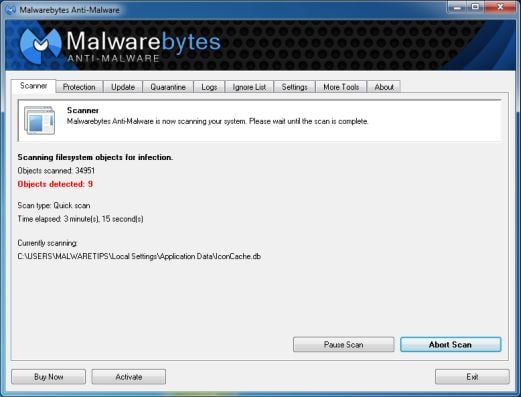
![Malwarebytes when the system scan has completed [Image: Malwarebytes Anti-Malware scan results]](http://malwaretips.com/blogs/wp-content/uploads/2013/01/malwarebytes-scan-results.jpg)
![Malwarebytes Anti-Malwar removing Your computer has been locked and all your data were encrypted virus [Image: Malwarebytes Anti-Malwar removing Your computer has been locked and all your data were encrypted virus]](http://malwaretips.com/blogs/wp-content/uploads/2013/01/malwarebytes-virus-removal.jpg)
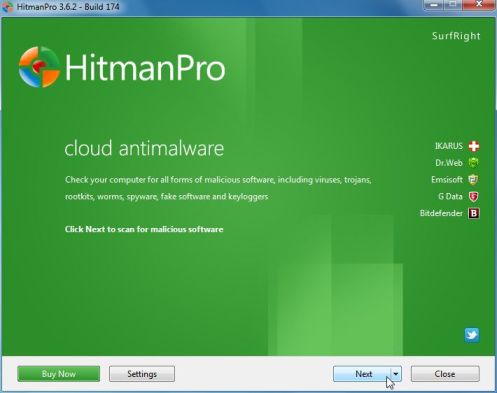
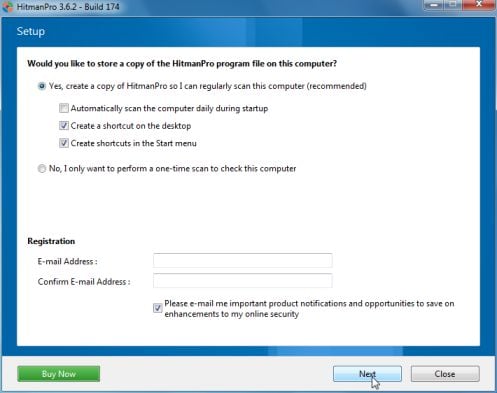
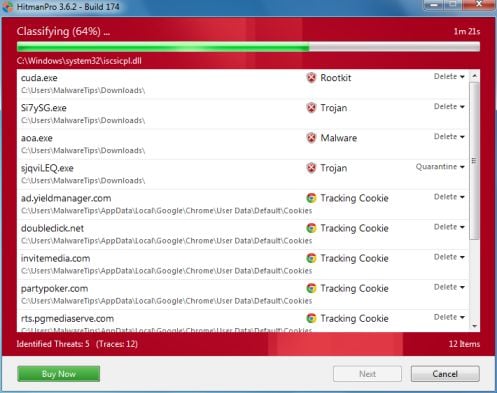
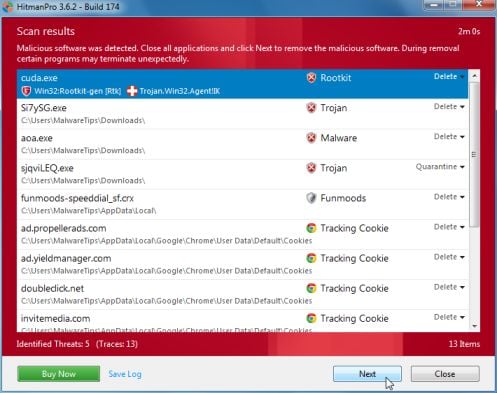
![HitmanPro free 30 days trial [Image: HitmanPro 30 days activation button]](http://malwaretips.com/blogs/wp-content/uploads/2012/11/hitmanpro-activation.jpg)
![Windows Boot Menu screens [Image: Windows Boot Menu screens]](http://malwaretips.com/blogs/wp-content/uploads/2013/06/windows-boot-manager.jpg)
![Creating Kaspersky Rescue Disk bootable CD [Image: Bootable Kaspersky Rescue CD]](http://malwaretips.com/blogs/wp-content/uploads/2013/06/creating-bootable-kaspersky-rescue-disk.jpg)
![Starting infected computer from Kaspersky Rescue Disk [Image: Starting infected computer from Kaspersky Rescue Disk]](http://malwaretips.com/blogs/wp-content/uploads/2013/06/Kaspersky-Rescue-Disk-boot.png)
![Kaspersky Rescue Disk Graphic Mode screen [Image: Kaspersky Rescue Disk Graphic Mode screen]](http://malwaretips.com/blogs/wp-content/uploads/2013/06/Kaspersky-Rescue-Disk-graphic-mode.png)
![Kaspersky Rescue Disk scanner [Image: Kaspersky Rescue Disk scanner]](http://malwaretips.com/blogs/wp-content/uploads/2013/06/Kaspersky-Rescue-Disk.jpg)
![Updating Kaspersky Rescue Disk antivirus definitions [Image: Updating Kaspersky Rescue Disk antivirus definitions]](http://malwaretips.com/blogs/wp-content/uploads/2013/06/Kaspersky-Rescue-Disk-update.jpg)
![Kaspersky Rescue Disk scan [Image: Kaspersky Rescue Disk scan]](http://malwaretips.com/blogs/wp-content/uploads/2013/06/Kaspersky-Rescue-Disk-scan.jpg)
![Kaspersky Rescue Disk when detecting malware [Image: Kaspersky Rescue Disk prompt]](http://malwaretips.com/blogs/wp-content/uploads/2013/06/Kaspersky-Rescue-Disk-alarm.png)










Your excellent advice help me to clean up my PC – was stuck for a day and can’t thank you enough! Many thanks – much appreciated.
Thank you so much!!! Very very helpful!
Scared the “crap” out of me when I saw this message today……..what will they think of next? Thank you so much as this nasty virus is gone.
Thank You Sir!!! Your blog really helped me to clean my PC.
Great site. Thanks!!!!